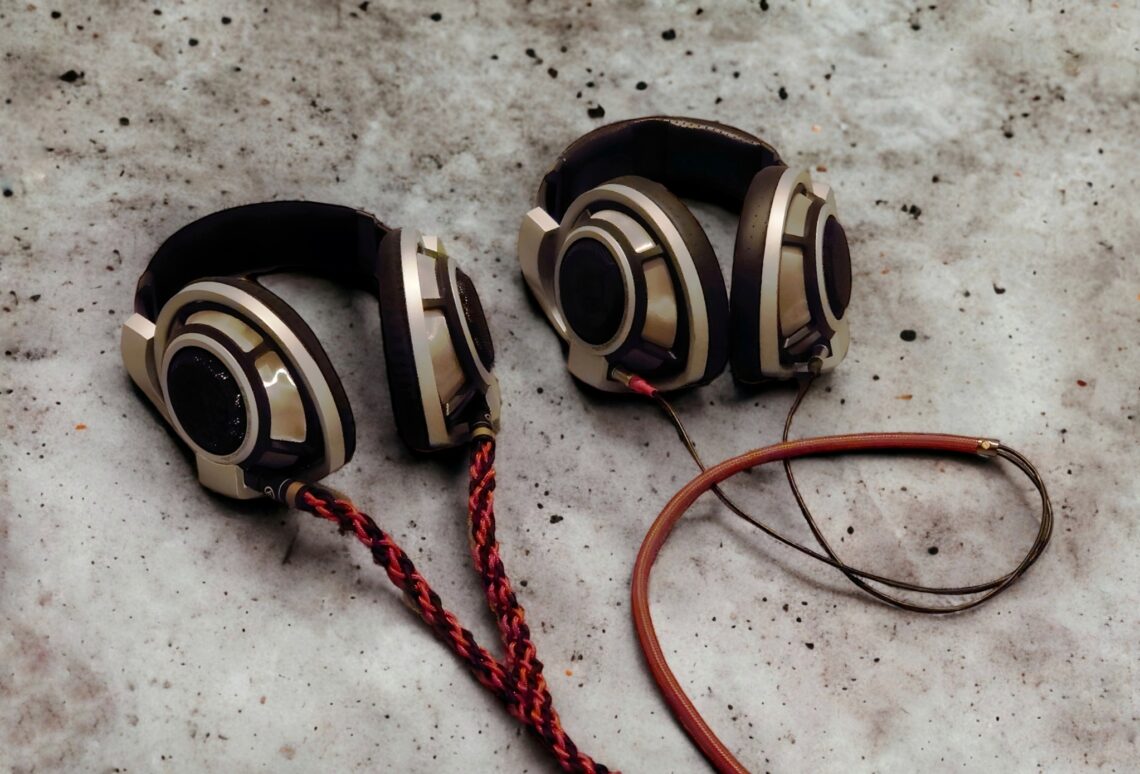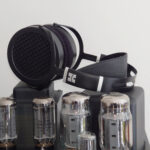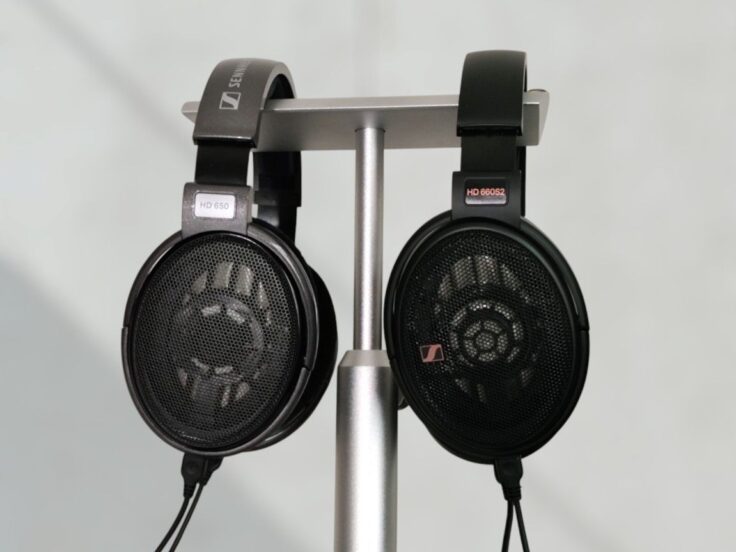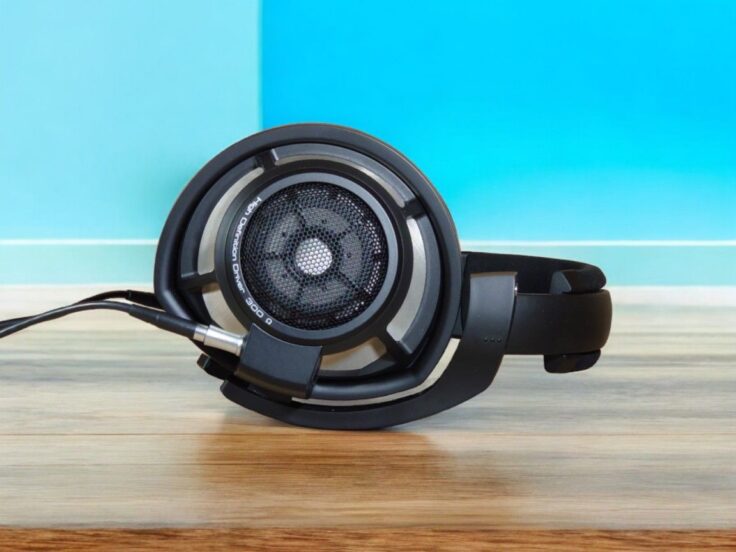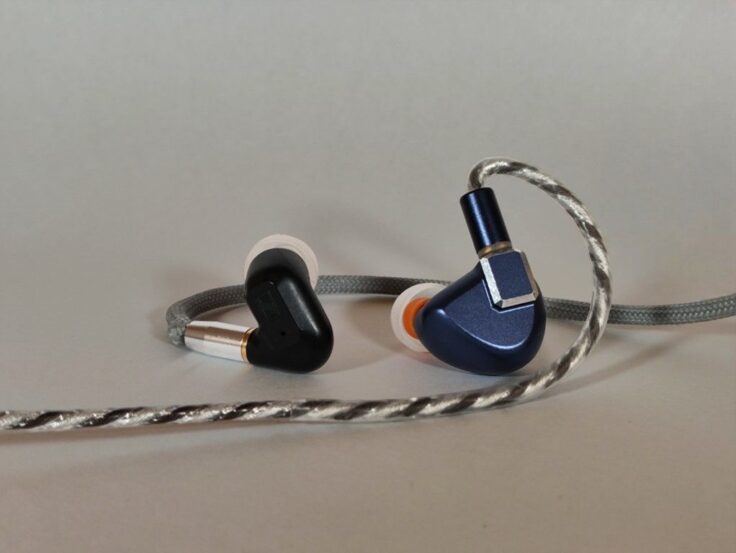At The Headphoneer we are huge fans of the Sennheiser HD800. The longest post on this site is about finding the perfect amplifier for the HD800. Erlend loves the bright treble, which is one of the reasons it has such an impressive soundstage. Myself, however, have had issues with listener fatigue and I am alone.
If you are one of those headphone enthusiasts that has come to the level that headphone listening, research and acquisition can be called a hobby, you will certainly have read your fair share of threads about headphone modding.
Modding is about making a headphone better or tuning it to your liking. Often it is motivated by the lack of money to buy the most high-end headphones, but more and more the modding has also become a way to make the best headphones even better.
I have always been fascinated by headphone modding, however, since I have focused on reviewing gear, it has not been my priority. That being said, the only headphone I have modded is the Sennheiser HD800. That’s not at all a coincidence.
The HD800 is actually to blame for getting into the hobby of headphone madness in the first place. Back in 2010, the year after the HD800 was launched, I got my first real headphones. After many auditions, I settled for the HD650. I still have that pair.
And probably I could have been happy as a clam with the HD650 if it hadn’t been for the fact that an HD800 came up as an open box offer at my local 2nd market at a very reasonable price. I was curious (isn’t that why we end up with all these headphones…) So I went ahead and bought the Sennheiser Flagship from a young woman who had won them headphones in a give-away contest from Sennheiser. When I showed to pick them up she actually asked me: “What are they for?”
Myself I had no problems figuring out what they were for and with my amplifier at the time, a Naim Headline, and a Naim DAC, I was amazed by the resolution. The only problem was that after a while my ears started hurting. They were just too fatiguing. I tried the “Jazz mod” (adding layers of velvet on all hard surfaces inside the cup to reduce internal reflections), I tried different cables but it wasn’t enough. So with a heavy heart, I sold them off.
However, the detail level of the HD800 left me amazed and sent me out on what would be a long quest: To get the same level of detail in a way my ears could handle.
As I learned more and acquired different amplifiers, I re-bought the HD800, I actually owned two at the same time, because there were said to be sound variations over time (which was correct). With better suited amplifiers I could listen to the HD800 with less fatigue and my search for the perfect amplifier resulted in a not-so-short article you can read here: https://www.headphoneer.com/hd800-amplifier-review/
Since then, I have been holding on to my latest HD800. To be honest I am not a fan of the sound signature. I find it to be too thin and anemic sounding, but the cleanliness and soundstage is great. The HD800 could never be my only headphone but it’s great to take out once in as while. I like variation.
It does of course also function as a good reference when doing reviews and I had little problem with fatigue in shorter listening sessions with low-level volume and a good amplifier. Many times I have listened to the HD800S, but never had the urge to actually own it myself. There are so many other headphones I would rather own than a slightly toned down version of the HD800, slightly less fatiguing but still “thin” and bright-sounding. So I kept my original HD800.
Over the years the modding community never stopped doing modifications to the HD800 and it is still an ongoing process. Modding the HD800 has been a long-lasting and still ongoing community effort, where each new mod draws inspiration from previous work.
The so-called “Maxx mod”, developed by a modder with the nickname Maxx134, claims to have modded the HD800 close to perfection, a better headphone than the HD800 and HD800S, getting rid of the treble peak and ringing, increasing bass quality etc but without losing anything of that famous soundstage and altering the general sound signature of the HD800.
Thus, when a fellow headfier offered to lend me his HD800 with most of the Maxx mods in place, I didn’t say no.
INITIAL IMPRESSIONS
When I started listening to the Maxx mod HD800, I was amazed. “The HD800 can do great bass!”, I thought. It sounded like a HD800, just better. Further, I didn’t get much fatigue and could play at higher volumes, which of course makes a world of difference.
WHAT’S BEEN DONE
The modded HD800 I have been lent is a variant of the Maxx mod. It has anti-skid material supplied in order to dampen grill reflections. There is applied Dynamat on the outside of the driver with the intention of giving more weight to the sound. Blue tack has been added between the cup that holds the driver and the main housing in order to seal the cup better and increase sub-bass presence. The thin internal wiring has been replaced with high gauge silver wire. Further, the standard HD800 cable connectors has been replaced with 3.5mm sockets. The pads are replaced with 3rd party microfiber pads which are a bit thicker and with stiffer foam than the stock pads.
My own “stock” HD800 is not totally stock. It has Dekoni Fenestrated Sheepskin pads and an Atlas Zeno cable. I prefer the Dekoni Sheepskin a bit over the original pads, they sound a bit less clinical and fatiguing to my ears. Further, the HD800 Maxx mod pair had thicker pads than the originals, so I thought it was better to compare using the Dekoni pads, which also are thicker than the originals. Ideally, I should have identical pads on both pairs, but I didn’t.
However since the HD800 is a very open construction, I don’t find pads to make a huge difference, although the differences between pads are both noticeable and measurable.
This page is supported by users when they donate or use affiliate links to shop for anything on Amazon via our link here .
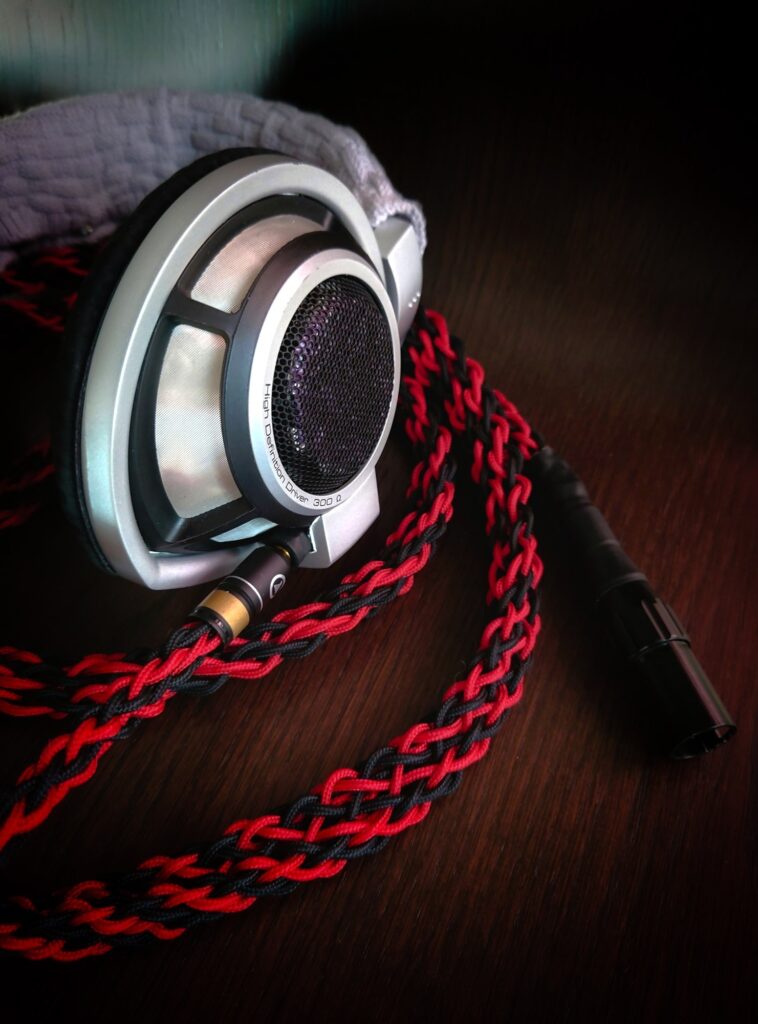
MAXX MOD HD800 VS STOCK HD800
Track-by-track comparison
In the comparison I used my Auralic Taurus amplifier and the RME ADI-2 DAC. I played all music at a low volume, in order to reduce listening fatigue. This makes the comparison quite unfair to the Maxx mod, because one of the real benefits is reduced fatigue. However, it was the only way for me to do an a/b comparison.
Okay by Solveig Slettahjell
Slow jazz. The female vocals are a bit fuller and warmer sounding with Maxx, thus I am preferring the modded version.
As Before by Olga Konkova
Slow jazz with heavy percussion. Maxx mod has a little more thump and focus in the bass region. The brightest piano tones are a little bit less piercing. Vocals are slightly fuller. I prefer the modded HD800.
Bored by Deftones
Noisy hardcore metal. Here the preference shifts. The modded HD800 feels a bit boxy sounding and strained, actually more fatiguing than the non modded version. I attribute this to specific frequencies in the recording itself that happens to be a bit more pronounced on the modded version.
Can’t You See by Susan Wong
Another female vocals-oriented song, where the most notably the vocals is a bit fuller and warmer with the modded version.
Almost Like the Blues by Leonard Cohen
The bass is a bit deeper and fuller sounding with the Maxx mod and Cohen’s voice has a bit more weight. The rattle/percussion that goes on through the whole track has more texture with the modded version, whilst it feels brighter with the unmodified HD800.
Further, I play one of Debussy’s Cello Concertos and some Vivaldi. The differences seem small with string music. Continuing with some Flamenco music (acoustic guitar, singing, percussion) the differences are also small.
Concluding, in this low level listening a/b test although I have focused on the differences I find sound signatures to be very similar. In terms of tonality, the differences are small. The modded version adds a little bit of bass presence in the lowest regions, a bit more forward sounding midrange and less bright highs. It retains the basic HD800 sound signature and presentation, soundstage included. I used to own two sets of HD800 from different years of production (serial numbers 28xxxx and 13xxxx) and I actually remember the difference in tonality AND soundstage between those two sets to be at the same level or even bigger than between the Maxx modded version and my own un-modded HD800.
In terms of technical performance, I feels the Maxx mod brings out a little bit more texture and detail across the board, mostly noticeable in the bass.
However, as mentioned before, there is a big BUT to this comparison. I have been using the modded HD800 quite a lot on its own and have really enjoyed it more than I ever enjoyed the HD800 (or HD800S), finding it to be easier to listen to and gives me more bass and midrange presence. So why do they sound so similar in this a/b comparison?
Basically, I think it has to do with playback volume. With the normal version of the HD800, I always have to set the volume low. In the comparison, I used low-volume playback. When I was listening to the Maxx modded version by itself, however, I could turn up the volume more without being fatigued. That’s made me enjoy the headphones a lot more than I am used to with the HD800.
I don’t know how much of the differences in sound are unit-to-unit variation. However, my experience with fatigue at higher volume levels has been an issue with all three HD800 headphones I have owned, as well as with the HD800S, albeit to a lesser degree.
Concluding: From what I hear, this iteration of the Maxx modification of the original HD800 manages to reduce listening fatigue, add a slight bit of mid-range warmth, a tad more texture in the treble region and more bass detail, texture, definition and presence. All of this without losing any of the famous HD800 soundstage or altering the sound signature much.
What about the HD800S? I do not have the Sennheiser HD800S at hand but have listened to it enough to say that I feel it is a bit less aggressive in the treble, slightly less fatiguing but also a bit dulled down, with slightly more bloomy bass. The modded version does not have any of the slightly dulled-down characteristics I remember from the HD800S. However, I will not be too categorical when relying on my memory but that’s all I have for now. I might do a comparison with the HD800 Maxx and the HD800S in the future.
PAPER TISSUE MOD
Now, advanced modifications are not for everyone. Not all HD800 owners are comfortable with tampering with their headphones. However, there are some extremely simple things you can do to reduce the treble intensity of the HD800. Personally, I had great success with adding a layer of thin paper tissue (toilet paper …LOL…) between the driver and my ears. The paper, depending on its acoustic transparency properties, will act as a filter that reduces mostly the higher frequencies. This is nothing I have invented myself. It’s been used by modders a long time. There is actually a forum thread where a user measured the performance of a HD800 with and without toilet paper (link: DTP mod).
You can also try acoustic tuning foam (Dekoni’s Attenuation Kit e.g.), spare part foam pads for various headphones like AKGs and Sennheiser HD6**s or other materials. Just go ahead and be creative. I’ll come back to foam pads a bit later.
Of course, you can also use EQ, but it has its limitations too and anyway that’s a whole different story.
Now, back to paper tissue. First, I cut a rounded rectangle appr. 4×6 cm of one layer of “3 layer” toilet paper (LOL) and put it straight into the cup on top of the fabric cover cups. I must admit I really like the sound. It is warmer, less fatiguing and the bass is more plentiful. Really great in many ways. The soundstage, however, suffers. It is good, but not as good as the HD800 should be.
I then cut the paper in a circle to fit the driver size and place it directly on top of the driver underneath the fabric cover inside the cup. This changes the sound stage dramatically for the better and now it is just about as open as the original but less bright sounding.
So, how does the Maxx-modded HD800 compare to my (almost) stock HD800 with my chosen paper tissue filter-mod?
HD800 paper tissue mod vs the HD800 MAXX mod
Cascades by Thomas Agergaard
Quiet jazz with just a piano and a saxophone. The headphones both sound open and very good. The treble and upper mid-range is slightly less pronounced with the paper mod.
Almost Like the Blues by Leonard Cohen
Very similar presentations, but slight differences in tonality in the upper mid range and treble. The paper mod is slightly more toned down, making it feel a little bit less airy and sparkly.
My Voice by Olga Konkova
I can barely differentiate them, the subtle differences I hear are similar to what I heard in previous songs.
All For Us by Labyrinth
This song differentiates the two a lot more. The Maxx modded version has more bass punch with more bass texture. The vocals are a bit sharper and up-front sounding. The HD800 with the simple paper mod sounds a bit more laid back.
Bored by Deftones
Also here, the bass stands out as more textured and aggressive on the Maxx mod.
Concluding, there is no doubt that the Maxx mod is better than the paper tissue mod. However, I am surprised at how effective the paper tissue was at reducing treble fatigue without altering the sound too much otherwise.
SIMPLE FOAM MOD
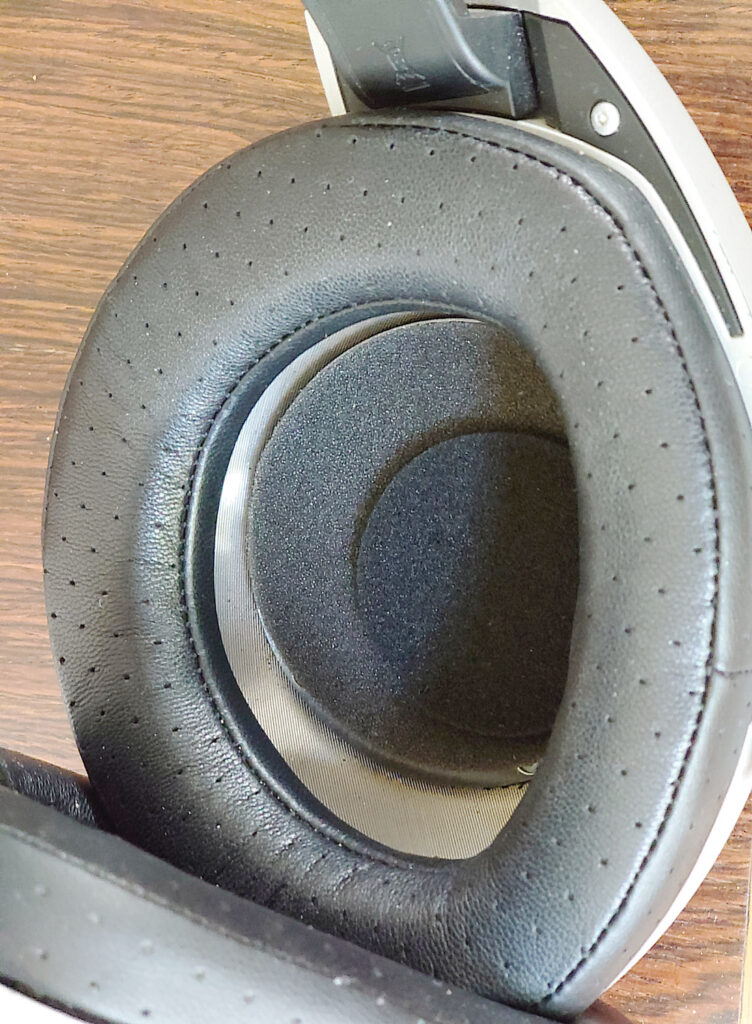
Inspired by the paper mod I bought some circular foam cover/pads, made by AKG for the AKG K271/271 and K141/121 respectively. The K271 pad covers the driver and most of the metal ring around it, the K141 pad does not even cover the whole driver area. None the less I found the smaller pad to reduce treble fatigue the most. Covering the whole driver is apparently not necessary. I also tried both on top of each other, which also sounds good, I’ll come back to that later. I didn’t find it necessary to attach it with tape or anything, just held the headphone horisontal while putting the foam in place and then putting the Sennheiser mesh cup on top, which then held the foam in place.
In the comparisons below, I used only the smaller K141 pad, the one which is not covering the whole driver but still it’s having the most effect.
Track-by-track comparison, Foam mod HD800 vs Maxx mod HD800
Third of May by FleetFoxes
The foam-modded version is warmer sounding but still has an open (but slightly narrower) soundstage. The Maxx modded is true to the HD800’s sound signature. It has that wide-open soundstage and is a bit thinner sounding, especially in the mid-range – a close to a stock HD800. I must admit I prefer the warmer sound signature from the simple foam-modded version, although the technical performance is slightly better from the Maxx.
Terminal 7 by the Tomasz Stanko Quintet
It is the same here, the foam-modded version is slightly warmer with a slightly narrower sound stage. I think the foam makes the sound more natural and less clinical.
Garari by Helge Lien Trio
Here I might prefer the Maxx modded version, it sounds clearer and crisper in what I find to be a preferable way, the foam modded version is slightly muffled in direct comparison but still enjoyable.
Feel You by Julia Holter
Here I am back to preferring the foam mod. Its sound is more natural, and not as thin. The differences are not huge, but significant.
I continue listening to different tracks and mostly find differences to be consistent. The Maxx mod is technically better and sounds true to the original hd800 signature, the foam gives a warmer, darker sound, which I do mostly prefer (because I’m just generally preferring warmer sounding headphones).
DOUBLE FOAM MOD
After trying different combinations, I end up using both the AKG foams simultaneously: The larger (but more acoustically transparent) K271 foam covers the driver and metal ring, and then I put the smaller foam on top – not in the middle but I align them in the rear part of the metal ring surrounding the driver. That way there is only one layer of foam in the front part of the driver, allowing more treble to come through in front of my ears. This really gives me a satisfying listening experience. Piercing treble and resonance are dampened yet the airiness is almost as good as before. The midrange is warmer, the bass is fuller. I simply prefer the tonality this simple foam mod gives me to both the stock version and the Maxx modded HD800.
HD800 MAXX MOD WITH FOAM MOD
So, I am a big fan of what the Maxx mod does, but I am also attracted to tuning the sound with various foam or even paper tissue pads. So why not combine them?
Unfortunately, I don’t have two sets of identical foam pads for direct a/b comparisons, but putting foam pads in the Maxx mod tunes it more to my liking, giving me the best of both approaches: Better technical performance and more even frequency response from the Maxx mod, and a warmer sound signature from the foam pads (which dampens the treble more generally).
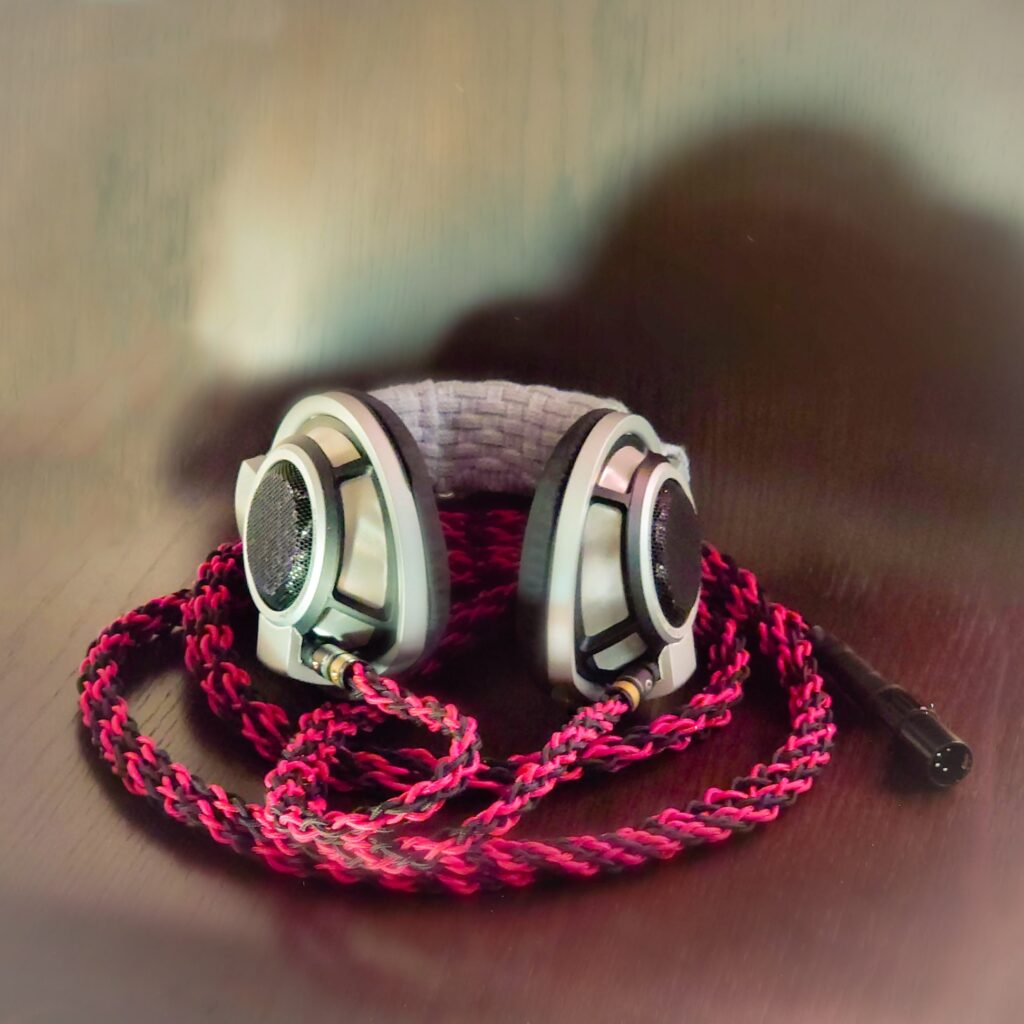
CONCLUSION
The Maxx modded HD800 sounds like a technically better version of the HD800. It impressively retains the (by many) beloved HD800 sound signature, whilst removing the fatigue-inducing treble peak and resonances. The bass is better in terms definition and also ever so slightly more present with a bit more “thump”. The fatiguing treble peaks are tamed in a way I can feel more than I can hear. The mid-range sounds quite similar to stock, albeit slightly more forward. At first listen, the changes are subtle, but after more listening it is apparent that things are different. I can play at higher volumes without fatigue. It is very an impressive achievement.
With regards to my own experimentation, I want to say that I am aware that I am a novice when it comes to modding. What I did was only adding physical filters that reduces some frequencies more than others and probably dampening some chamber resonance.
That being said, I found that adding foam or paper tissue to the stock HD800 reduces treble fatigue to some extent. It also alters the sound signature. After playing with the different foam and paper tissues, filtering the treble with the right material shifts the signature in a direction I personally prefer. A combination of specific foam pads worked the best for my personal preferences, with both the stock and the Maxx modded HD800. Because the treble is generally reduced, you get relatively speaking more bass and mids. The foam will also reduce in-chamber resonance. At the cost of some airiness, I get a warmer sound signature and slightly more intimate soundstage.
My own tuning experiments aside, the main takeaway here is this: The Maxx mod does make the HD800 better sounding in technical terms and reduces listening fatigue by a large margin without changing the general sound signature or the reducing the with and depth of the famous HD800 soundstage. I am very impressed with it.
Any purchase you make on Amazon or Linsoul with any of our affiliate links will give us a small provision at no cost to you.
We only get a provision for items that are not returned, so there’s no incentive for us to recommend something that’s not good.
Linsoul : Headphones, Earbuds, Wireless Earbuds, Desktop DAC/AMP, Portable DAC/AMP, Digital Audio Players,
Amazon: Headphones, IEMs, Headphone Amplifiers, Home Audio or Anything else.
.
If you enjoyed this article or other content on The Headphoneer, you might consider leaving a small donation to keep this website up and running. No donation is too small. Thanks for supporting us!
If you like our work please follow us on Instagram, Facebook and Twitter , it will help us grow. Sharing is caring 🙂
Further readings:
Sennheiser HD800 Maxx mod:
https://www.head-fi.org/threads/senn-hd800-ultimate-maxx-mod.879024/
https://www.superbestaudiofriends.org/index.php?threads/hd800-s-ultimate-mod.6217/
Tyll Hertsens reflects upon modding and the difference between Sennheiser HD800 and HD800S:
My take on various amplifiers for the Sennheiser HD800:


